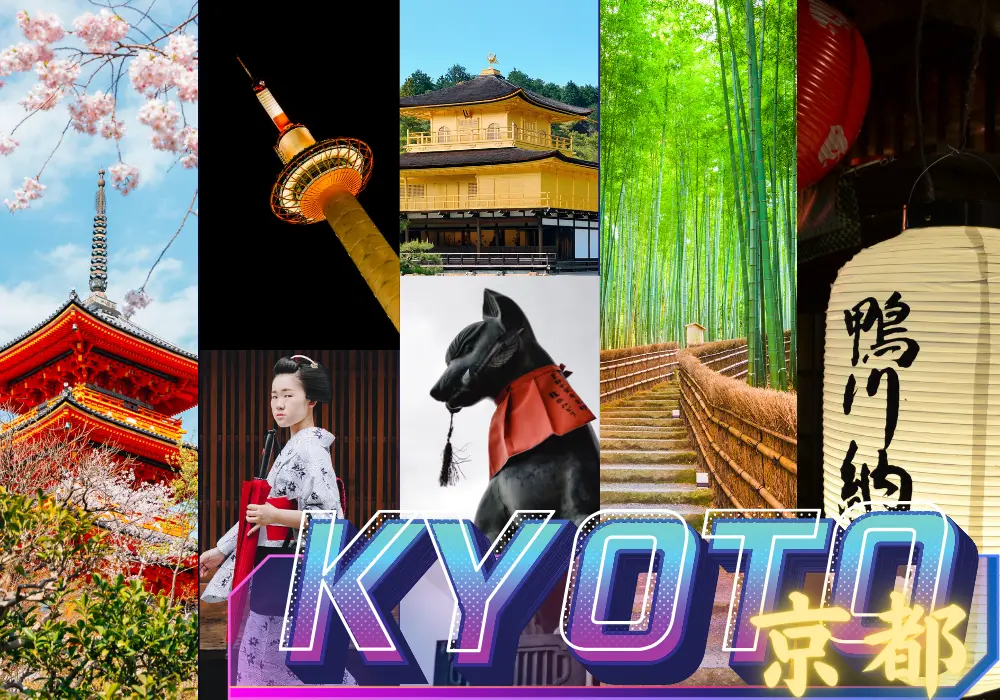Yasaka Shrine in Kyoto is the head shrine of approximately 2,300 Yasaka Shrines across Japan.
It is renowned for its blessings in warding off evil, matchmaking, and beauty, making it a must-see spot for travelers. Known as the center of the annual Gion Festival held in July, it is widely cherished as a key attraction in Kyoto tourism. The adjacent Maruyama Park is a famous spot bustling with cherry blossoms in spring and vibrant autumn foliage.
Here, we introduce the highlights of Kyoto’s Yasaka Shrine.
Yasaka Shrine
Lovely shrine
Lovely shrine with food stalls all over. Can easily have dinner there and if you keep walking towards the garden, there are more stalls and the famous cherry blossom tree. It’s very cosy and fun at night!
Love it!!
Beautiful and unique shrine in the middle of Kyoto downtown. Located in Gion area and full of character and natural charms. The main hall of the shrine is a lovely sight with the prayer hall in front of it strung with lanterns serving as the stage for many a cultural performance throughout the year. The night version of this shrine is really super cool! Love it!!
Very nice vibe!
We came here during the cherry blossom season, and it was super packed in the evening. The shrine was beautiful, and there were a lot of vendors on the road from the shrine to the park next to it, creating a very nice vibe!
From Google Review – Yasaka Shrine
| Open Hours | 24 Hours |
| Official Website | https://www.yasaka-jinja.or.jp/ |
The history of Yasaka Shrine’s founding is ancient, dating back to before the relocation of the capital to Heian.
It began when Emperor Saimei (the 37th Emperor, reigning from 655 to 661) enshrined Susanoo-no-Mikoto as the tutelary deity of the Yasaka clan. Yasaka Shrine is affectionately known as “Gion-san,” a deity for warding off evil and epidemics, and is famous for the Gion Festival, one of Japan’s three major festivals.
Located near the bustling main street of Gion Shijo in Kyoto, Yasaka Shrine is surrounded by lush nature preserved by faith. Revered by the people of Kyoto for centuries, the shrine’s grounds contain nearly 20 smaller shrines, each offering blessings.
The traditional scenery around Yasaka Shrine, which has remained unchanged, provides a precious space where visitors can experience history firsthand, making it a popular destination for both domestic and international visitors.
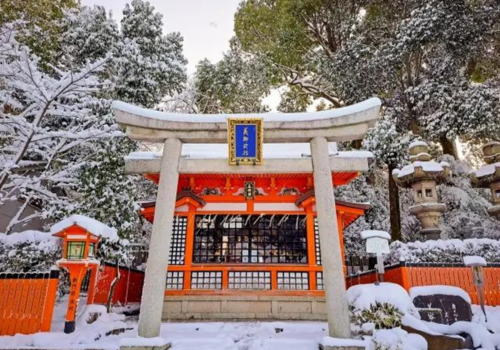
Goddess of Beauty at Yasaka Shrine
Within the grounds of Yasaka Shrine, there is the Utsukushigozen Shrine, which is dedicated to the three Munakata goddesses, known as deities of beauty.
These goddesses, revered for their exquisite beauty, attract devout worshippers from the entertainment industry, including maiko and geiko, as well as those involved in beauty and cosmetics.
The blotting paper and beauty water sold here are popular items, known among those in the know as secret beauty aids.
Host of the Gion Festival, One of Japan’s Three Major Festivals
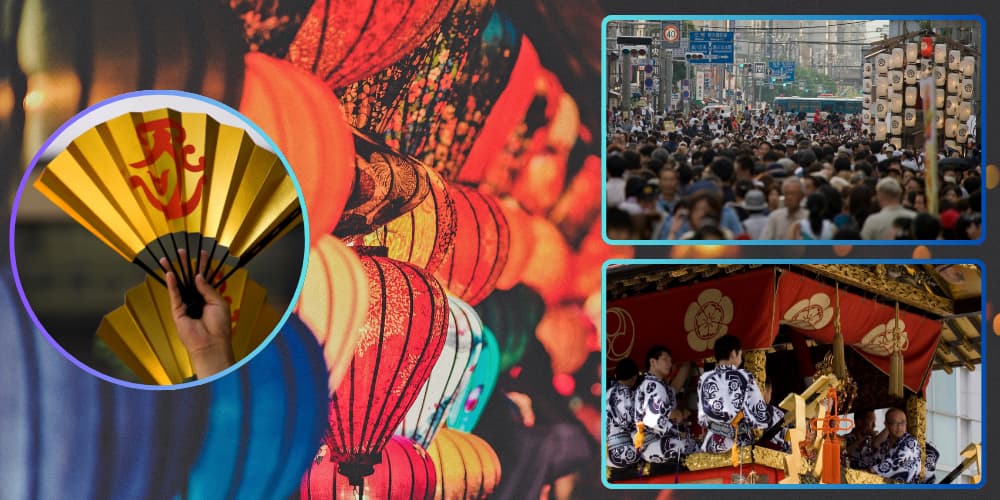
The Gion Festival hosted by Yasaka Shrine spans the entire month of July.
Originating as a ritual to appease the gods and stop epidemics in Kyoto, this long-standing festival is renowned for its vibrant events. The highlights are the Mikoshi Procession on July 17th and 24th, and the parade of 33 floats. The nights before these events draw large crowds, enveloping Kyoto in festive excitement. The float parade, registered as a UNESCO Intangible Cultural Heritage, is a unique spectacle seen only during the festival.
Despite the inevitable crowds, it is a must-see summer tradition, attracting both locals and tourists alike.
Highlight of Yasaka Shrine
Yasaka Shrine boasts many attractions that captivate its visitors.
In this section, we will introduce the highlights of Yasaka Shrine, including its historical and cultural significance, events such as the Gion Festival, and notable sites like the Utsukushigozen Shrine and the adjacent Maruyama Park.
You will understand why Yasaka Shrine is cherished by many and well worth a visit.
The South Gate and West Gate of Yasaka Shrine
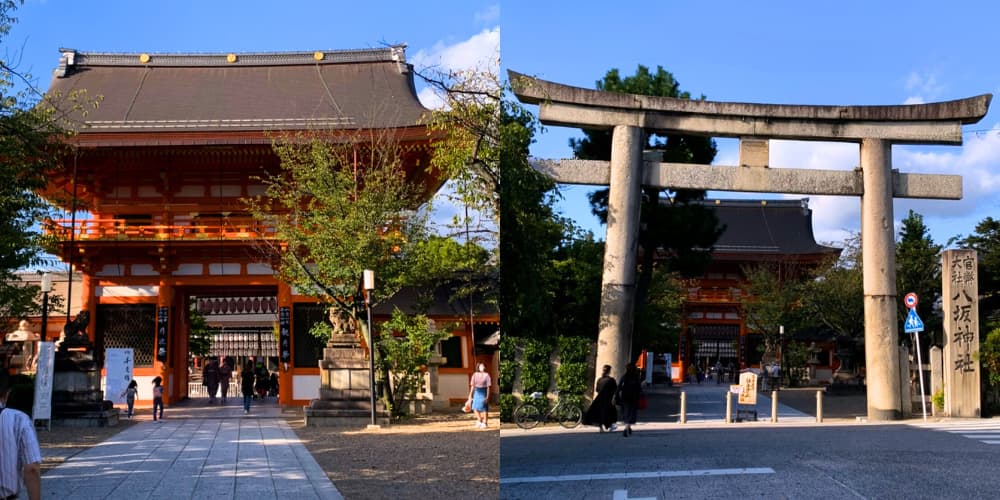
At the eastern end of Kyoto’s main street, Shijo-dori, stands the West Gate of Yasaka Shrine, designated as an Important Cultural Property of Japan. Its vibrant vermilion color makes it a popular photo spot. After being destroyed during the Onin War, it was rebuilt in 1497 and is the oldest structure within the shrine grounds.
Many people mistakenly believe that the West Gate, facing Shijo-dori, is the main gate. However, the true main gate is the South Gate, which faces the front of the main hall. A large torii gate stands before the South Gate, and processions and mikoshi (portable shrines) pass through this gate during shrine ceremonies.
The stone torii at the South Gate, made from natural stone, is considered one of the largest in Japan and is also designated as an Important Cultural Property.
The Main Shrine of Yasaka Shrine

The Main Shrine of Yasaka Shrine enshrines the primary deity, Susanoo-no-Mikoto, along with Kushiinadahime-no-Mikoto and Yahashira-no-Mikogami.
The building’s beautiful cypress bark roof represents the Heian period architectural style known as “Gion-zukuri,” where the main hall and the worship hall are covered by a single large roof. The current main hall was reconstructed in 1654 by Tokugawa Ietsuna, the fourth shogun of the Tokugawa dynasty.
The lattice fence surrounding the eastern side of the main hall and the area where offerings are prepared, built in the mid-Meiji period, features exquisite arabesque carvings.
The Dance Pavilion
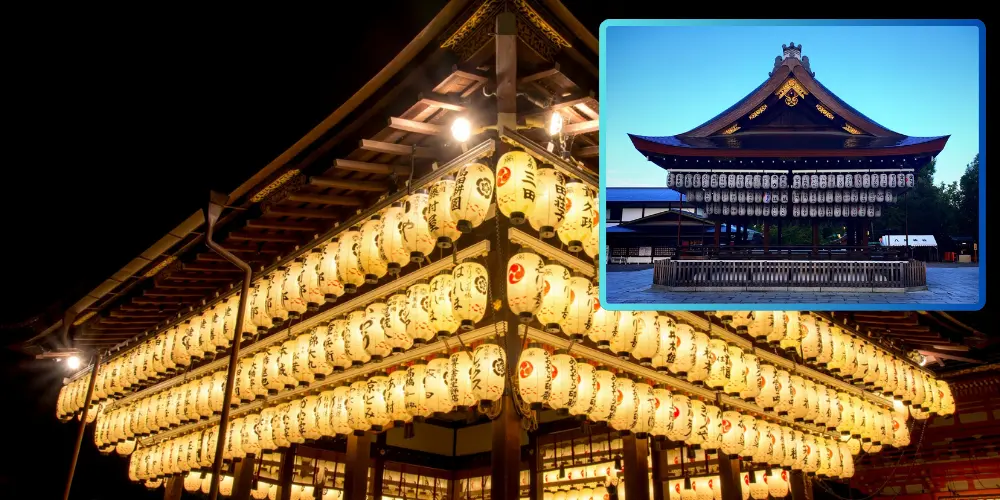
The Dance Pavilion, located between the main hall and the worship hall, is where kagura (sacred music and dance) and other rituals are performed.
It features traditional architectural styles dating back to the Heian period and is one of the key structures within the shrine grounds. During festivals and ceremonies, the pavilion hosts performances of gagaku (ancient court music) and elegant dances. The Gion Festival, in particular, attracts many visitors who are captivated by its beauty and sacred atmosphere.
Chikara Mizu Spring Water
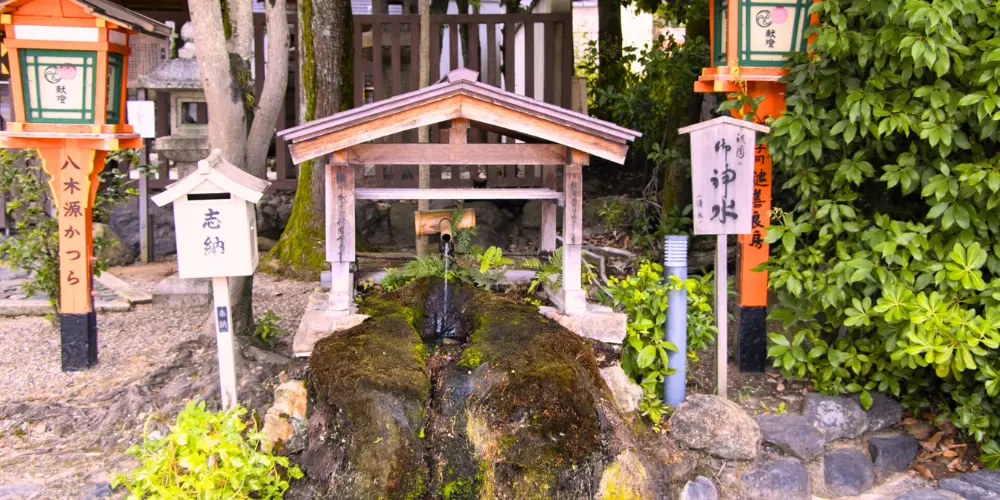
Near the Utsukushigozen Shrine at Yasaka Shrine, there is a spring known as “Chikara Mizu” (Power Water).
Locals believe it grants spiritual energy, though it is not safe for drinking. There is a legend that applying this water to one’s face can enhance beauty, making it particularly beloved by the geiko and maiko of the Gion area. Many visitors interested in beauty and health come to cleanse their skin with this water. It is believed to bring a pure mind and body to those who use it.
Other Shrines at Yasaka Shrine
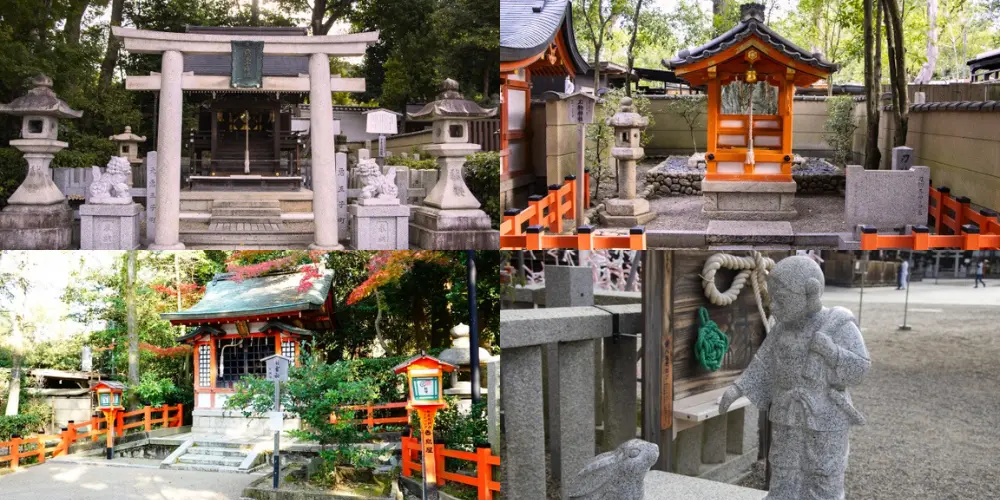
In addition to the main shrine, dance pavilion, and spring water, Yasaka Shrine hosts numerous other deities.
For instance, the Ōkuninushi Shrine is dedicated to the god of love and marriage, while the Ebisu Shrine honors the god of prosperity and business success. Visitors can pray at these shrines according to the blessings they seek.
It is recommended to explore the various shrines within Yasaka Shrine to fulfill different wishes.
Access to Yasaka Shrine
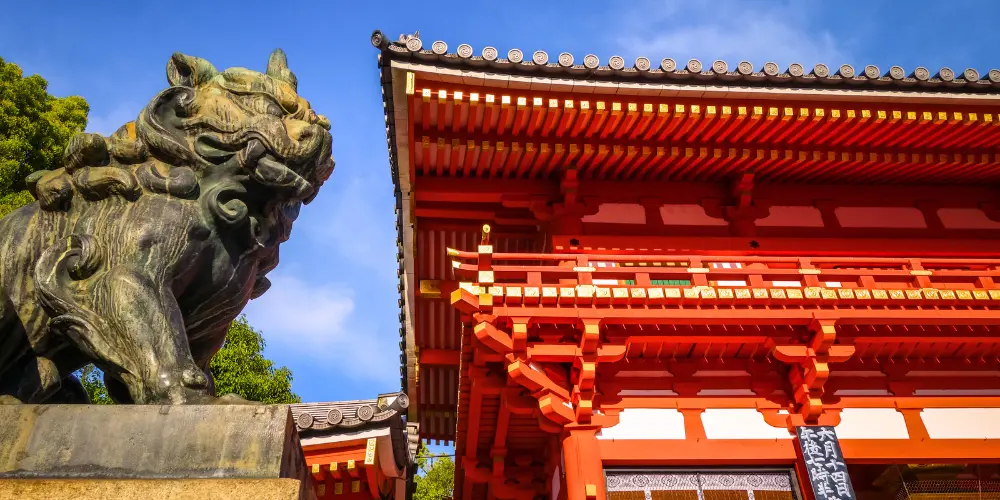
Yasaka Shrine is conveniently located in the center of Kyoto.
The nearest station is Gion-Shijo Station on the Keihan Main Line, which is about a 5-minute walk from the shrine. It is also accessible from Kawaramachi Station on the Hankyu Kyoto Line, with a walk of approximately 10 minutes.
If you prefer taking the bus, the nearest stop is “Gion” on the Kyoto City Bus line, located just a short walk away. While it is possible to drive to the shrine, parking is limited, so using public transportation is recommended.



